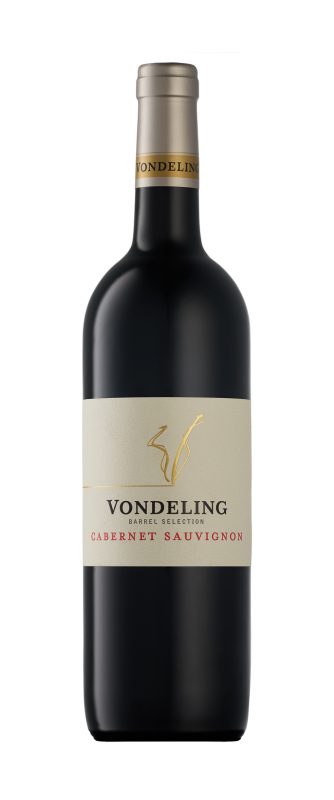-
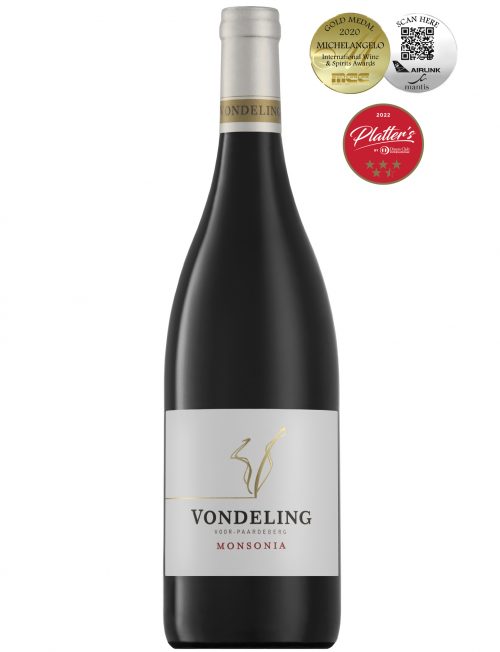 (Shiraz 60%, Mourvédre 23%, Carignan 10% & Grenache Noir 7%) Vondeling Monsonia is named after Monsonia Speciosa, a very rare species of fynbos (vegetation type occurring in the Western Cape region of South Africa) found in the Paardeberg mountain, the home of Vondeling wines. THE NAME MONSONIA The flower was named after Lady Anne Monson, the great-grandchild of King Charles II. Controversially, her first marriage was dissolved, due to the birth of an illegitimate child but she soon remarried Colonel George Monson of the Indian Military. She was known as a “remarkable lady botanist” and was instrumental in translating Linnaeus’s famous “Philosophia Botanica”. On her way to Calcutta, she visited the Cape of Good Hope and accompanied seasoned collector of South African plants, Carl Peter Thunberg, on several expeditions around the Cape. In 1774, he named the Monsonia species of plants after her. VINEYARDS The Shiraz vines grow in ancient, well-weathered granite soils on southeast-facing slopes – ideal for our warm South African climate. In total, six clones of Shiraz can be found on the farm and only the best performing clones go into the final blend. Typically, each clone contributes different characteristics to the wine and the different blocks are picked at varying degrees of ripeness, best suited to their character. The Mourvedre, Carignan, and Grenache are best adapted to hot sun and are grown as bush vines on North East-facing slopes. Highly selective hand-picking guarantees that only the best fruit arrives at the winery. VINIFICATION After being chilled overnight, bunches are partially destemmed, but not crushed, and whole berry fermentation takes place in open-top fermentation tanks. An initial two-day period of cold soaking is applied before wild yeast fermentation is allowed to commence. During fermentation, hand plunging, commonly known as "punch downs" is the method of mixing and extraction. After fermentation, the wine is pressed in a traditional boutique-size basket press. All wine is then transferred directly to barrel where malolactic fermentation takes place. Only large format French oak barrels are used, with about one-third new and the rest 2nd and 3rd fill. The wine is allowed to mature for 16 months before a final barrel selection, blending and bottling takes place TASTING NOTES & CELLARING & FOOD PAIRING Vibrant and clear charcoal red with beautifully viscous legs clinging to the glass. Each grape component vies for attention in this kaleidoscopic bouquet. Sweet Lillies and rose-petal Turkish delight from the Grenache. Plush black currant and blueberries from the Carignan. All wrapped in a velvety blanket of red berries and soft spice from the Shiraz. A smooth, velvety palate devoid of harsh or grippy tannin. Red cherry candy and sweet plumb at the fore with a soft plush center and subtle spice with roasted coconut at the end. Well paired with a mature steak, barbequed over a hotbed of coals and served with sauteed baby mushrooms, or try a hearty, slow-cooked pork belly with root vegetables and tomatoes. Accolades 2016 Vinatge:
(Shiraz 60%, Mourvédre 23%, Carignan 10% & Grenache Noir 7%) Vondeling Monsonia is named after Monsonia Speciosa, a very rare species of fynbos (vegetation type occurring in the Western Cape region of South Africa) found in the Paardeberg mountain, the home of Vondeling wines. THE NAME MONSONIA The flower was named after Lady Anne Monson, the great-grandchild of King Charles II. Controversially, her first marriage was dissolved, due to the birth of an illegitimate child but she soon remarried Colonel George Monson of the Indian Military. She was known as a “remarkable lady botanist” and was instrumental in translating Linnaeus’s famous “Philosophia Botanica”. On her way to Calcutta, she visited the Cape of Good Hope and accompanied seasoned collector of South African plants, Carl Peter Thunberg, on several expeditions around the Cape. In 1774, he named the Monsonia species of plants after her. VINEYARDS The Shiraz vines grow in ancient, well-weathered granite soils on southeast-facing slopes – ideal for our warm South African climate. In total, six clones of Shiraz can be found on the farm and only the best performing clones go into the final blend. Typically, each clone contributes different characteristics to the wine and the different blocks are picked at varying degrees of ripeness, best suited to their character. The Mourvedre, Carignan, and Grenache are best adapted to hot sun and are grown as bush vines on North East-facing slopes. Highly selective hand-picking guarantees that only the best fruit arrives at the winery. VINIFICATION After being chilled overnight, bunches are partially destemmed, but not crushed, and whole berry fermentation takes place in open-top fermentation tanks. An initial two-day period of cold soaking is applied before wild yeast fermentation is allowed to commence. During fermentation, hand plunging, commonly known as "punch downs" is the method of mixing and extraction. After fermentation, the wine is pressed in a traditional boutique-size basket press. All wine is then transferred directly to barrel where malolactic fermentation takes place. Only large format French oak barrels are used, with about one-third new and the rest 2nd and 3rd fill. The wine is allowed to mature for 16 months before a final barrel selection, blending and bottling takes place TASTING NOTES & CELLARING & FOOD PAIRING Vibrant and clear charcoal red with beautifully viscous legs clinging to the glass. Each grape component vies for attention in this kaleidoscopic bouquet. Sweet Lillies and rose-petal Turkish delight from the Grenache. Plush black currant and blueberries from the Carignan. All wrapped in a velvety blanket of red berries and soft spice from the Shiraz. A smooth, velvety palate devoid of harsh or grippy tannin. Red cherry candy and sweet plumb at the fore with a soft plush center and subtle spice with roasted coconut at the end. Well paired with a mature steak, barbequed over a hotbed of coals and served with sauteed baby mushrooms, or try a hearty, slow-cooked pork belly with root vegetables and tomatoes. Accolades 2016 Vinatge:2020 Platter’s Guide – 4.5 Stars 2019 Michelangelo – Gold 2019 Winemag - 93pts
2018 Vintage:2021 Platter’s Guide – 4.5 Stars / 94 Points 2020 Michelangelo - Gold 2022 Tim Atkin 90 Pts 2022 Michelangelo Awards - Gold 2023 Platter’s Guide 4,5 Stars (92 Pts)
2019 Vintage: 2024 Platter’s Guide 4.5 Stars (92 Pts) Analysis pH 3.50 Total Acidity 5.3 g/l Residual Sugar 3.3 g/l Alcohol 13.72 % Download Tasting Sheet -
 VINEYARDS Made primarily from cold-pressed Merlot, the anchor vineyard for this delicious wine is over 20yrs old. Located on a granite spur in the foothills of the Paardeberg Mountain, the berries are well exposed to sunlight. Exposure to sunlight is essential to eliminate green flavours from the fruit. The soil has a high clay percentage, and this lends softness and volume to the wine. Great care is taken to ensure that the vines do not bear too great a crop or suffer from drought. This is done through green cropping of the vines and micro-irrigation. Both practices help to preserve the natural acidity, freshness and vibrancy of the grape aromas. VINIFICATION Grapes are picked at optimum ripeness in the early hours of the morning before being destemmed and chilled before pressing. This short route, from vine to press, ensures minimal degradation of the fruit aromas and a very moderate extraction of colour. All free-run juice is kept separate from the colour fraction to ensure a deliciously subtle salmon colour. The juice is cold settled to remove any coarseness and fermentation is done in stainless steel tanks. The wine is 100% unoaked. A six-month period of maturation on the yeast lees promotes richness and complexity. TASTING NOTES & CELLARING & FOOD PAIRING The wine has a delightfully delicate, salmon pink colour. It displays a bright bouquet of Turkish delight, raspberry coulis, passion fruit, and taught grapefruit. The palate is well rounded but refreshingly vibrant, packed with red berry flavours, seductive floral undertones, and a pleasant citrus twist. Pair with spicy Thai prawns, grilled Portuguese sardines, or a fresh tomato, feta and pomegranate salad. Accolades 2023 Platter’s Guide-3.5 stars (85Pts) 2023 Vintage: 2023 Gold Wine Awards-Gold 2023 Vitis Vinifera - Gold 2022 Vintage: 2022 Michelangelo - Gold 2022 Gilbert Gaillard -Gold 2021 Vintage: 2021 Michelangelo - Gold 2021 Vitis Vinifera - Gold 2021 Rose Rocks - Gold 2020 Vintage: 2020 Rose Rocks - Gold 2020 Vitis Vinifera Awards - Gold Analysis pH 3.47 Total Acidity 5.5 g/l Residual Sugar 3.6 g/l Alcohol 12.57 % Download Tasting Sheet
VINEYARDS Made primarily from cold-pressed Merlot, the anchor vineyard for this delicious wine is over 20yrs old. Located on a granite spur in the foothills of the Paardeberg Mountain, the berries are well exposed to sunlight. Exposure to sunlight is essential to eliminate green flavours from the fruit. The soil has a high clay percentage, and this lends softness and volume to the wine. Great care is taken to ensure that the vines do not bear too great a crop or suffer from drought. This is done through green cropping of the vines and micro-irrigation. Both practices help to preserve the natural acidity, freshness and vibrancy of the grape aromas. VINIFICATION Grapes are picked at optimum ripeness in the early hours of the morning before being destemmed and chilled before pressing. This short route, from vine to press, ensures minimal degradation of the fruit aromas and a very moderate extraction of colour. All free-run juice is kept separate from the colour fraction to ensure a deliciously subtle salmon colour. The juice is cold settled to remove any coarseness and fermentation is done in stainless steel tanks. The wine is 100% unoaked. A six-month period of maturation on the yeast lees promotes richness and complexity. TASTING NOTES & CELLARING & FOOD PAIRING The wine has a delightfully delicate, salmon pink colour. It displays a bright bouquet of Turkish delight, raspberry coulis, passion fruit, and taught grapefruit. The palate is well rounded but refreshingly vibrant, packed with red berry flavours, seductive floral undertones, and a pleasant citrus twist. Pair with spicy Thai prawns, grilled Portuguese sardines, or a fresh tomato, feta and pomegranate salad. Accolades 2023 Platter’s Guide-3.5 stars (85Pts) 2023 Vintage: 2023 Gold Wine Awards-Gold 2023 Vitis Vinifera - Gold 2022 Vintage: 2022 Michelangelo - Gold 2022 Gilbert Gaillard -Gold 2021 Vintage: 2021 Michelangelo - Gold 2021 Vitis Vinifera - Gold 2021 Rose Rocks - Gold 2020 Vintage: 2020 Rose Rocks - Gold 2020 Vitis Vinifera Awards - Gold Analysis pH 3.47 Total Acidity 5.5 g/l Residual Sugar 3.6 g/l Alcohol 12.57 % Download Tasting Sheet -
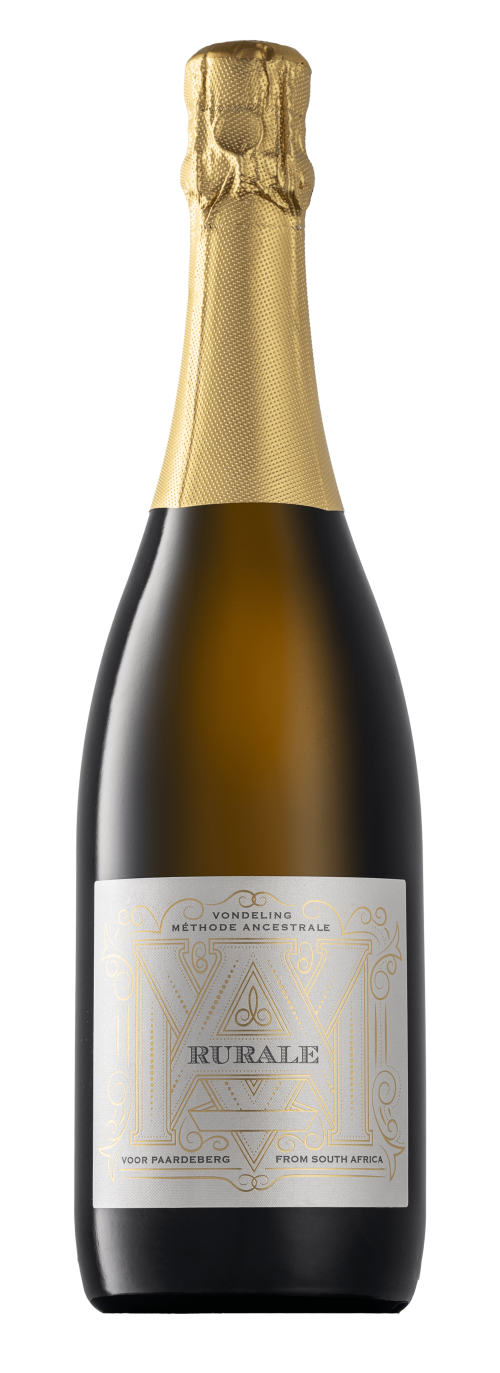 (80% Chardonnay & 20% Pinotage) VINEYARDS Vondeling Rurale is comprised of 80% Chardonnay and 20% Pinotage. The Chardonnay grapes originate from a single block, located on a south-west facing slope on the decomposed granite soils of the Paardeberg Mountain. The Pinotage grapes are grown on our lower valley slopes in soils comprised of gravel and clay. Typically, the Pinotage grapes add weight and texture. Unlike Mèthode Cap Classique, Mèthode Ancestrale grapes are harvested with a potential alcohol of 12% (rather than 9%). This promotes a fuller, more rounded pallet with superior fruit expression without compromising on natural vibrancy and freshness. VINIFICATION Natural fermentation begins in a stainless-steel tank and when only a small, but critical amount of sugar remains, the fermenting wine is bottled and capped. Bottling must be done at the precise moment when there is enough remaining sugar to create a healthy, vibrant mousse, but not so much as to cause the bottles to explode. This single, continuous fermentation, using fruit which is approximately three weeks riper than the base wine used to make Mèthode Cap Classique, is what makes Mèthode Ancestrale unique. The wine is matured on its lees for 3 years before riddling and disgorging. Autolysis of the yeast cells increases the richness, palate weight, and creaminess to the wine. After being hand-riddled over a one-month period, it is disgorged and topped using our flagship white blend, Babiana from the2013 vintage, as an alternative to liqueur d’expedition. The name Rurale is the original name for what was later recognized by the French A.O.C as Mèthode Ancestrale. We love the implication that this is an uncomplicated, yet pure expression of both the grape and its origins. Rurale was the first recognized Mèthode Ancestrale to be produced in South Africa and remains the leader in this category. Vondeling was instrumental in drafting the technical description, which allowed this new category to be recognized in 2014. It is a highly labor-intensive way to produce sparkling wine, and for this reason, only 3300 bottles were produced. All grapes are grown and vinified on Vondeling Farm and Cellar. TASTING NOTES & CELLARING & FOOD PAIRING The wine displays a pale straw colour typical of bubbly that has enjoyed the benefits of extended lees maturation. Tiny, pearl-string bubbles and fine mousse abound. Beautiful aromas of lavender honey, lime, crisp apple with freshly baked pastry and toasted almonds on the nose. The palate is bright and zippy with vibrant acidity and a soft, creamy mouthfeel. Fresh apple appears again along with pears, confected lemon and a long, rich, lingering aftertaste. Rurale can be paired with smoked salmon, fennel-roasted trout or fresh oysters with a squeeze of lemon, salt, and pepper. Accolades: 2018 Vintage: 2021 SA Sparkling Wine Championships – Double Gold 2021 Michelangelo- Gold 2022 Platter Wine Guide 2020 – 4,5 stars (93pts) Analysis: pH 3.42 Total Acidity 7.6 g/l Residual Sugar 5.9 g/l Alcohol 13.02 % Download Tasting Sheet
(80% Chardonnay & 20% Pinotage) VINEYARDS Vondeling Rurale is comprised of 80% Chardonnay and 20% Pinotage. The Chardonnay grapes originate from a single block, located on a south-west facing slope on the decomposed granite soils of the Paardeberg Mountain. The Pinotage grapes are grown on our lower valley slopes in soils comprised of gravel and clay. Typically, the Pinotage grapes add weight and texture. Unlike Mèthode Cap Classique, Mèthode Ancestrale grapes are harvested with a potential alcohol of 12% (rather than 9%). This promotes a fuller, more rounded pallet with superior fruit expression without compromising on natural vibrancy and freshness. VINIFICATION Natural fermentation begins in a stainless-steel tank and when only a small, but critical amount of sugar remains, the fermenting wine is bottled and capped. Bottling must be done at the precise moment when there is enough remaining sugar to create a healthy, vibrant mousse, but not so much as to cause the bottles to explode. This single, continuous fermentation, using fruit which is approximately three weeks riper than the base wine used to make Mèthode Cap Classique, is what makes Mèthode Ancestrale unique. The wine is matured on its lees for 3 years before riddling and disgorging. Autolysis of the yeast cells increases the richness, palate weight, and creaminess to the wine. After being hand-riddled over a one-month period, it is disgorged and topped using our flagship white blend, Babiana from the2013 vintage, as an alternative to liqueur d’expedition. The name Rurale is the original name for what was later recognized by the French A.O.C as Mèthode Ancestrale. We love the implication that this is an uncomplicated, yet pure expression of both the grape and its origins. Rurale was the first recognized Mèthode Ancestrale to be produced in South Africa and remains the leader in this category. Vondeling was instrumental in drafting the technical description, which allowed this new category to be recognized in 2014. It is a highly labor-intensive way to produce sparkling wine, and for this reason, only 3300 bottles were produced. All grapes are grown and vinified on Vondeling Farm and Cellar. TASTING NOTES & CELLARING & FOOD PAIRING The wine displays a pale straw colour typical of bubbly that has enjoyed the benefits of extended lees maturation. Tiny, pearl-string bubbles and fine mousse abound. Beautiful aromas of lavender honey, lime, crisp apple with freshly baked pastry and toasted almonds on the nose. The palate is bright and zippy with vibrant acidity and a soft, creamy mouthfeel. Fresh apple appears again along with pears, confected lemon and a long, rich, lingering aftertaste. Rurale can be paired with smoked salmon, fennel-roasted trout or fresh oysters with a squeeze of lemon, salt, and pepper. Accolades: 2018 Vintage: 2021 SA Sparkling Wine Championships – Double Gold 2021 Michelangelo- Gold 2022 Platter Wine Guide 2020 – 4,5 stars (93pts) Analysis: pH 3.42 Total Acidity 7.6 g/l Residual Sugar 5.9 g/l Alcohol 13.02 % Download Tasting Sheet -
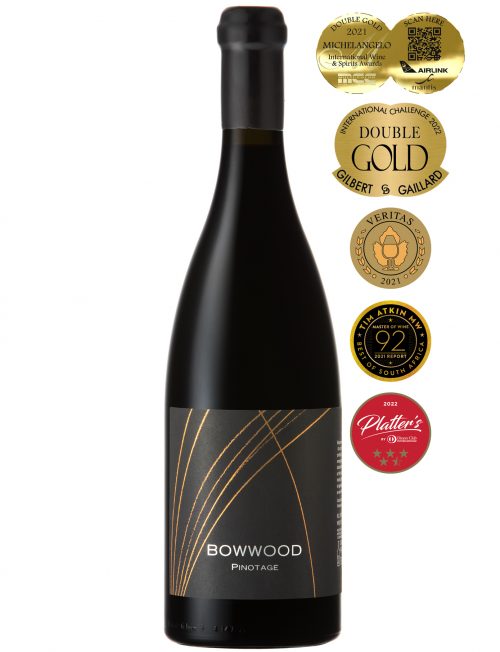 (100% Pinotage) VINEYARDS Bowwood Pinotage is made from a small, single vineyard, planted in clay-rich gravel soils in 1998. The vineyard is shy bearing with poor vigour, which ensures tiny berries with hugely concentrated flavour. A North-South row orientation exposes the grapes to plenty of gentle morning and late afternoon sunshine, perfect for intense colour and aromatic development. VINIFICATION The grapes are hand-picked in early February with a ripeness of 25 Balling. Each bunch is pre-chilled before being destemmed and berry sorted. The berries are not crushed but are fermented whole. This allows for a gradual extraction of tannins and colour, which promotes finesse, balance and longevity. The berries are fermented in open-top fermenters, which provide easy access for the winemaker to assess and manipulate the fermentation. The wine is punched down regularly for 8 days and then basket pressed directly to new and second fill, 300L American oak barrels. Malolactic fermentation takes place in the barrel, which promotes harmony and seamless integration of the oak flavours. The wine is further matured on the yeast and malolactic lees for 18 months. At this point, the finest 12 barrels are selected, blended and returned to barrel for an additional 6 months. Finally, the wine is kept for 4 months in a stainless-steel tank to promote stability and clarification, before it is bottled and laid to rest for a full year before it is released. FURTHER REMARKS Bowwood Pinotage is made to rival the best wines in the world and will benefit greatly from additional cellaring. This is only the six vintage. TASTING NOTES & CELLARING & FOOD PAIRING Opaque in colour with dark hues of purple and red, it delivers an intense black cherry and plum bouquet interlaced with sweet cloves and vanillarich oak. Bold fruit and pungent spice aromatics persist on the palate with undertones of roasted almonds and cigar smoke. The palate is broad and rich with soft acidity and abundant, fine tannin. A luxurious, full-flavored, and modern wine. Accolades 2020 Vintage: 2023 Michelangelo- Double Gold 2023 Veritas-Double Gold 2024 Platter’s Guide- 4.5 Stars (91 Pts) 2019 Vintage: 2022 ABSA TOP 10 Winner 2022 Veritas- Double Gold Vintage 2018: 2021 Michelangelo – Double Gold 2021 Veritas – Gold 2022 Platter’s Guide – 4.5 Stars (94pts) 2022 Gilbert & Gaillard -Double Gold (92pts) Analysis pH 3.52 Total Acidity 5.8 g/l Residual Sugar 3.5 g/l Alcohol 14.48 % Download Tasting Sheet
(100% Pinotage) VINEYARDS Bowwood Pinotage is made from a small, single vineyard, planted in clay-rich gravel soils in 1998. The vineyard is shy bearing with poor vigour, which ensures tiny berries with hugely concentrated flavour. A North-South row orientation exposes the grapes to plenty of gentle morning and late afternoon sunshine, perfect for intense colour and aromatic development. VINIFICATION The grapes are hand-picked in early February with a ripeness of 25 Balling. Each bunch is pre-chilled before being destemmed and berry sorted. The berries are not crushed but are fermented whole. This allows for a gradual extraction of tannins and colour, which promotes finesse, balance and longevity. The berries are fermented in open-top fermenters, which provide easy access for the winemaker to assess and manipulate the fermentation. The wine is punched down regularly for 8 days and then basket pressed directly to new and second fill, 300L American oak barrels. Malolactic fermentation takes place in the barrel, which promotes harmony and seamless integration of the oak flavours. The wine is further matured on the yeast and malolactic lees for 18 months. At this point, the finest 12 barrels are selected, blended and returned to barrel for an additional 6 months. Finally, the wine is kept for 4 months in a stainless-steel tank to promote stability and clarification, before it is bottled and laid to rest for a full year before it is released. FURTHER REMARKS Bowwood Pinotage is made to rival the best wines in the world and will benefit greatly from additional cellaring. This is only the six vintage. TASTING NOTES & CELLARING & FOOD PAIRING Opaque in colour with dark hues of purple and red, it delivers an intense black cherry and plum bouquet interlaced with sweet cloves and vanillarich oak. Bold fruit and pungent spice aromatics persist on the palate with undertones of roasted almonds and cigar smoke. The palate is broad and rich with soft acidity and abundant, fine tannin. A luxurious, full-flavored, and modern wine. Accolades 2020 Vintage: 2023 Michelangelo- Double Gold 2023 Veritas-Double Gold 2024 Platter’s Guide- 4.5 Stars (91 Pts) 2019 Vintage: 2022 ABSA TOP 10 Winner 2022 Veritas- Double Gold Vintage 2018: 2021 Michelangelo – Double Gold 2021 Veritas – Gold 2022 Platter’s Guide – 4.5 Stars (94pts) 2022 Gilbert & Gaillard -Double Gold (92pts) Analysis pH 3.52 Total Acidity 5.8 g/l Residual Sugar 3.5 g/l Alcohol 14.48 % Download Tasting Sheet -
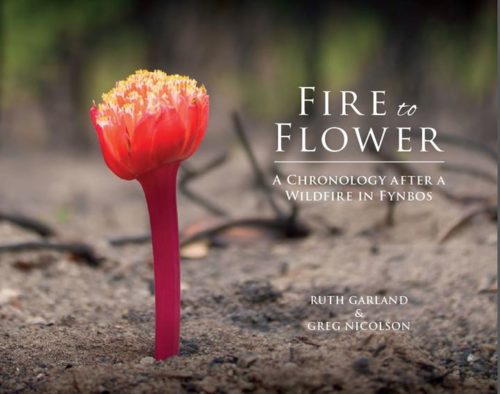 This publication materialised following a fire on the Paardeberg, which burnt 75% of the mountain above the farmlands. Being the first fire in 25 years, it offered an unmatched opportunity to document and observe the emergent plant species as they germinated and flowered. Sponsored by Anthony Ward, of Vondeling Wine Estate, botanist and photographer Greg Nicolson recorded and archived images and specimens over 18 months, in consultation with the Compton Herbarium. He collected over 1000 species, including one species new to science, and a number of new distribution records. Walking the mountain for over 18 months, gave Greg a broad view of animal, bird and insect inhabitants of the Paardeberg that have been included among the flowers. Ruth Garland was invited to write text to the publication, which is designed to highlight an appreciation of the diversity and beauty of this part of the matchless Cape Floral Kingdom. This book is primarily to give pleasure to those who love the natural world while also providing an opportunity to learn more about a spectacular part of it, so that it is treasured and adequately protected for generations to come.
This publication materialised following a fire on the Paardeberg, which burnt 75% of the mountain above the farmlands. Being the first fire in 25 years, it offered an unmatched opportunity to document and observe the emergent plant species as they germinated and flowered. Sponsored by Anthony Ward, of Vondeling Wine Estate, botanist and photographer Greg Nicolson recorded and archived images and specimens over 18 months, in consultation with the Compton Herbarium. He collected over 1000 species, including one species new to science, and a number of new distribution records. Walking the mountain for over 18 months, gave Greg a broad view of animal, bird and insect inhabitants of the Paardeberg that have been included among the flowers. Ruth Garland was invited to write text to the publication, which is designed to highlight an appreciation of the diversity and beauty of this part of the matchless Cape Floral Kingdom. This book is primarily to give pleasure to those who love the natural world while also providing an opportunity to learn more about a spectacular part of it, so that it is treasured and adequately protected for generations to come. -
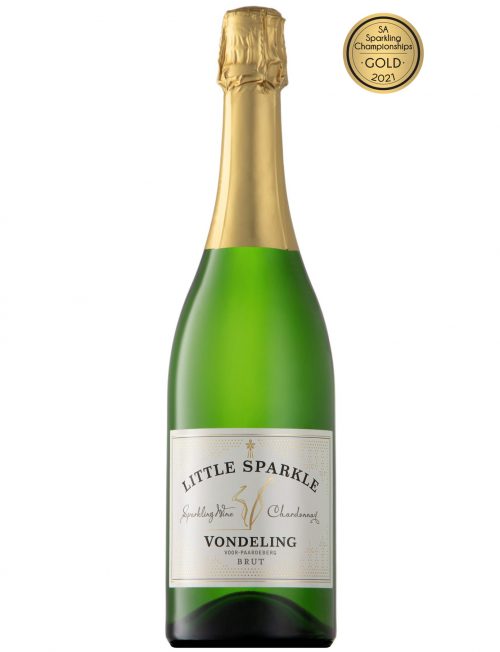
Little Sparkle
Inspired by our pioneering, limited release Methode Ancestral, our Little Sparkle is a fresh and vibrant offering for every occasion. This endearing wine will wash away the mundane and bring out the fabulous in you. Work on this project began several years ago and was born from the desire to make a premium Sparkling Wine affordable to ALL our loyal customers and wedding guests. We knew we had excellent Chardonnay, well suited to the production of premium sparkling wine but felt that the Rurale, our Methode Ancestral, was perhaps out of reach for some. We began by experimenting with different fermentation techniques that would offer you complexity without bottle fermentation and ageing. To put it simply we had to achieve this in the tank and then by using cutting edge new technology and equipment we were able to bottle the wine under high pressure and add that effervescent sparkle we love so much. VINIFICATION There is no doubt that great wine is made in the vineyard. At Vondeling we are blessed with a healthy assortment of soils, slopes and the climatic conditions that allow our grapes to ripen perfectly. We only work with grapes we farm ourselves and are therefore certain of their virility. The grapes for this wine originate from our steeper, South-facing slopes, which are naturally cooler. This helps to preserve the grape’s natural acidity, ensuring freshness and vibrancy. The grapes are picked during the early hours of the morning and crushed as whole bunches to limit oxidation and phenolic extraction. Keeping the colour bright and the aromas intact. Once pressed, the juice is allowed to settle in stainless steel tanks for 48hrs before the clear juice is racked and inoculated with a specifically neutral yeast, which will not create any overly tropical aromas. This is essential in creating a base wine suitable for sparkling wine production. Should there be too many overtly fruity aromas, the wine will be less refreshing and the effect of the bubbles less discreet. Fermentation encouraged to take place vigorously and at a warm temperature to promote mouthfeel and to dimmish fruity aromas. Fermentation takes approximately two weeks, after which the wine remains on the yeast lees for a minimum of 7months. During this time, through a process known as autolysis, the yeast cell walls disintegrate and impart a creaminess to the wine. Storage conditions are kept cool to encourage precipitation of some of the natural acidity and to block any secondary malo-lactic fermentation. The wine is now ready for a final filtration to clarify the wine and ensure its sterility before being bottled with an in-bottle pressure 5,4 bars. TASTING NOTES & CELLARING & FOOD PAIRING The wine is clear and vibrant with a hint of pale yellow on the fringe. Tiny chains of sparkling bubbles rise to the surface like miniature strings of pearls. On the nose, you’ll experience a mild citrus and brioche bouquet which is typical of premium sparkling Chardonnay. The Little Sparkle has a full palate with abundant bubbles and a smooth, soft, creamy finish Elegant and well-rounded, enjoy this wine wherever there is good company and great food. We recommend this wine with smoked salmon and cucumber sandwiches or delicious West Coast oysters. Accolades 2022 Gold Wine Awards - Gold 2021 SA Sparkling Wine Championship - Gold Analysis pH 3.3 Total Acidity 7.3 g/l Residual Sugar 11.7 g/l Alcohol 12.9 % Download Tasting Sheet

